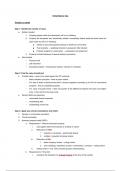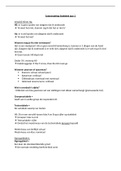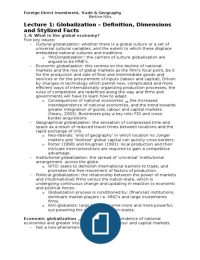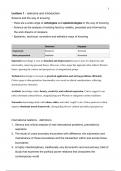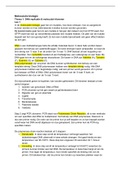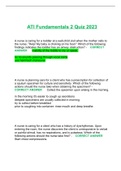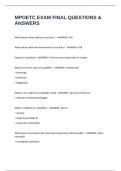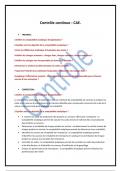Title: Language Policy in South African Schools: Balancing Mother Tongue and English
Instruction
Text B, written by Nompumelelo Mohohlwane, explores the language dilemma in South
African schools and presents three policy options to address the issue. This essay aims to
analyse the purpose, diction, and style of the text, highlighting its strengths and weaknesses
in effectively conveying the author's message.
Purpose:
The primary purpose of Text B is to discuss and propose policy options that address the
mother tongue versus English debate in South African schools. Mohohlwane presents
evidence from various African countries, emphasising the importance of mother-tongue
instruction in the early years of education. The author highlights the inconsistency between
the Language in Education Policy and the actual schooling experience, as well as the
growing preference for English as the main language of instruction.
Diction:
The author's choice of diction is clear and concise, making the text easily understandable to
a wide range of readers. Mohohlwane employs neutral language to present the policy
options objectively, avoiding emotional or biassed language. The use of specific terms, such
as "mother tongue," "medium of instruction," and "curriculum statements," helps to provide
clarity and precision in discussing the language issue in South African schools.
The author also utilises statistical data effectively to support the arguments. By citing the
results of the South African Social Attitudes Survey, Mohohlwane demonstrates the
increasing preference for English as the main language of instruction. The inclusion of
specific percentages, such as the rise from 55% to 65% in favour of English, strengthens the
author's claims and adds credibility to the argument.
Style:
The style of the text is informative and persuasive. Mohohlwane incorporates research
findings from various African countries to support the argument for mother-tongue
instruction. By drawing on evidence from Botswana, Tanzania, Ethiopia, Kenya, and South
Africa, the author establishes the international consensus in favour of starting schooling in
the language the child knows best.
The text is structured logically, with the author presenting three policy options in a systematic
manner. Each option is discussed in detail, outlining its strengths, potential challenges, and
requirements for implementation. This approach allows readers to consider the merits and
drawbacks of each option and encourages critical thinking on the issue.
Strengths and Weaknesses:
One of the strengths of Text B is its reliance on empirical evidence and research to support
the arguments. By citing studies from various African countries, the author bolsters the case
for mother-tongue instruction in the early years of education. The inclusion of statistical data
also adds credibility to the claims made in the text.
Instruction
Text B, written by Nompumelelo Mohohlwane, explores the language dilemma in South
African schools and presents three policy options to address the issue. This essay aims to
analyse the purpose, diction, and style of the text, highlighting its strengths and weaknesses
in effectively conveying the author's message.
Purpose:
The primary purpose of Text B is to discuss and propose policy options that address the
mother tongue versus English debate in South African schools. Mohohlwane presents
evidence from various African countries, emphasising the importance of mother-tongue
instruction in the early years of education. The author highlights the inconsistency between
the Language in Education Policy and the actual schooling experience, as well as the
growing preference for English as the main language of instruction.
Diction:
The author's choice of diction is clear and concise, making the text easily understandable to
a wide range of readers. Mohohlwane employs neutral language to present the policy
options objectively, avoiding emotional or biassed language. The use of specific terms, such
as "mother tongue," "medium of instruction," and "curriculum statements," helps to provide
clarity and precision in discussing the language issue in South African schools.
The author also utilises statistical data effectively to support the arguments. By citing the
results of the South African Social Attitudes Survey, Mohohlwane demonstrates the
increasing preference for English as the main language of instruction. The inclusion of
specific percentages, such as the rise from 55% to 65% in favour of English, strengthens the
author's claims and adds credibility to the argument.
Style:
The style of the text is informative and persuasive. Mohohlwane incorporates research
findings from various African countries to support the argument for mother-tongue
instruction. By drawing on evidence from Botswana, Tanzania, Ethiopia, Kenya, and South
Africa, the author establishes the international consensus in favour of starting schooling in
the language the child knows best.
The text is structured logically, with the author presenting three policy options in a systematic
manner. Each option is discussed in detail, outlining its strengths, potential challenges, and
requirements for implementation. This approach allows readers to consider the merits and
drawbacks of each option and encourages critical thinking on the issue.
Strengths and Weaknesses:
One of the strengths of Text B is its reliance on empirical evidence and research to support
the arguments. By citing studies from various African countries, the author bolsters the case
for mother-tongue instruction in the early years of education. The inclusion of statistical data
also adds credibility to the claims made in the text.

